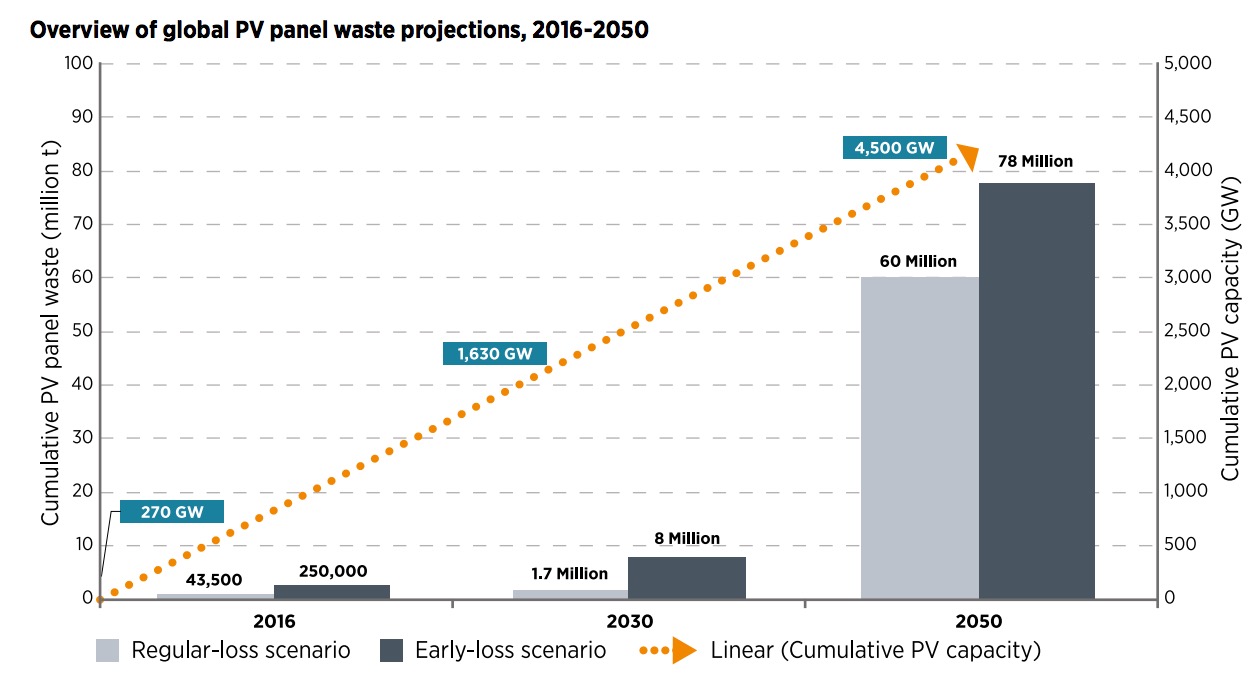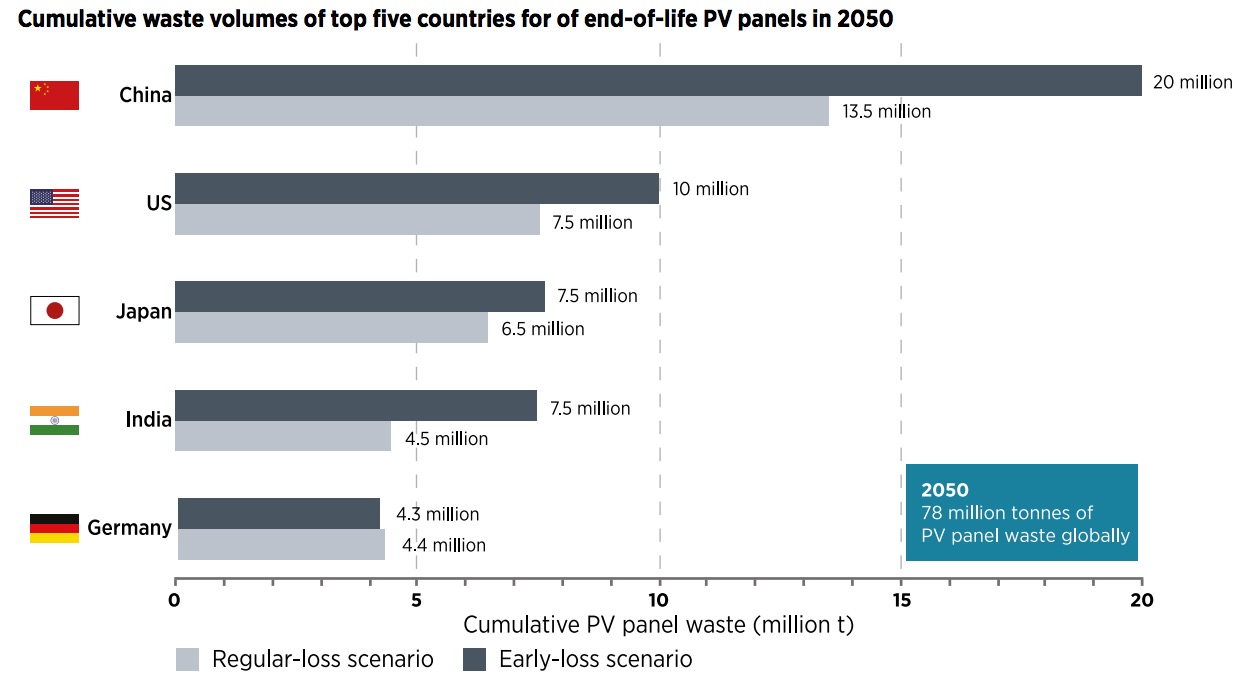INTERNATIONAL RENEWABLE ENERGY AGENCY (IRENA)
Executive Summary
Solar photovoltaic (PV) deployment has grown at unprecedented rates since the early 2000s. Global installed PV capacity reached 222 gigawatts (GW) at the end of 2015 and is expected to rise further to 4,500 GW by 2050. Particularly high cumulative deployment rates are expected by that time in China (1,731 GW), India (600 GW), the United States (US) (600 GW), Japan (350 GW) and Germany (110 GW).
As the global PV market increases, so will the volume of decommissioned PV panels. At the end of 2016, cumulative global PV waste streams are expected to have reached 43,500-250,000 metric tonnes. This is 0.1%-0.6% of the cumulative mass of all installed panels (4 million metric tonnes). Meanwhile, PV waste streams are bound to only increase further. Given an average panel lifetime of 30 years, large amounts of annual waste are anticipated by the early 2030s. These are equivalent to 4% of installed PV panels in that year, with waste amounts by the 2050s (5.5-6 million tonnes) almost matching the mass contained in new installations (6.7 million tonnes).
Growing PV panel waste presents a new environmental challenge, but also unprecedented opportunities to create value and pursue new economic avenues. These include recovery of raw material and the emergence of new solar PV end-of-life industries. Sectors like PV recycling will be essential in the world’s transition to a sustainable, economically viable and increasingly renewables-based energy future. To unlock the benefits of such industries, the institutional groundwork must be laid in time to meet the expected surge in panel waste.
PV panel waste and global e-waste
The world’s total annual electrical and electronic waste (e-waste) reached a record of 41.8 million metric tonnes in 2014. Annual global PV panel waste was 1,000 times less in the same year. Yet by 2050, the PV panel waste added annually could exceed 10% of the record global e-waste added in 2014.
As the analysis contained in this report shows, the challenges and experiences with e-waste management can be turned into opportunities for PV panel waste management in the future.
This report presents the first global projections for future PV panel waste volumes to 2050. It investigates and compares two scenarios for global PV panel waste volumes until 2050.
- Regular-loss: Assumes a 30-year lifetime for solar panels, with no early attrition
- Early-loss: Takes account of “infant”, “mid-life” and “wear-out” failures before the 30-year lifespan
Policy action is needed to address the challenges ahead, with enabling frameworks being adapted to the needs and circumstances of each region or country. Countries with the most ambitious PV targets are expected to account for the largest shares of global PV waste in the future, as outlined by case studies in this report. By 2030 the top three countries for cumulative projected PV waste are projected to include China, Germany and Japan. At the end of 2050 China is still forecast to have accumulated the greatest amount of waste but Germany is overtaken by the United States of America (US). Japan comes next followed by India.
Download full version (PDF): End-of-Life Management – Solar Photovoltaic Panels
About the International Renewable Energy Agency (IRENA)
www.irena.org
The International Renewable Energy Agency (IRENA) is an intergovernmental organisation that supports countries in their transition to a sustainable energy future, and serves as the principal platform for international cooperation, a centre of excellence, and a repository of policy, technology, resource and financial knowledge on renewable energy. IRENA promotes the widespread adoption and sustainable use of all forms of renewable energy, including bioenergy, geothermal, hydropower, ocean, solar and wind energy in the pursuit of sustainable development, energy access, energy security and low-carbon economic growth and prosperity.
Tags: e-waste, International Renewable Energy Agency, IRENA, photovoltaic, PV, Solar Energy, Solar Panels, waste, Waste Disposal








 RSS Feed
RSS Feed